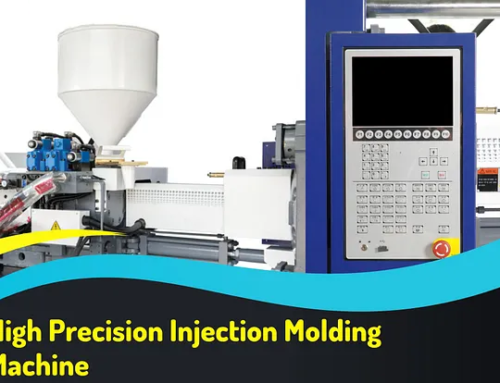Recent Blog
Contact With Me For More Details

Introduction
The plastic mold market is experiencing a period of significant growth and transformation. Driven by advancements in technology, the increasing demand for plastic products across various industries, and the rising trend towards lightweight and durable materials, the future of the plastic mold market looks promising. This article explores the factors contributing to the strong demand in the plastic mold market, future trends, and the potential challenges and opportunities that lie ahead.
Current State of the Plastic Mold Market
The plastic mold market is currently thriving due to its critical role in the production of a wide range of plastic products. These molds are essential for manufacturing items such as automotive parts, household appliances, medical devices, packaging, and consumer goods. The versatility, cost-effectiveness, and efficiency of plastic molds make them indispensable in modern manufacturing.
Key Drivers of Demand
- Automotive Industry: The automotive industry is one of the largest consumers of plastic molds. With the shift towards electric vehicles (EVs) and the need for lightweight materials to improve fuel efficiency, the demand for plastic components is on the rise. Plastic molds are used to produce intricate parts with high precision, meeting the industry’s stringent quality standards.
- Consumer Goods: The consumer goods sector, including electronics, toys, and household items, relies heavily on plastic molds for mass production. The ability to produce complex shapes and designs with consistency and speed makes plastic molds the preferred choice for manufacturers.
- Medical Devices: The healthcare sector’s growth has led to an increased demand for medical devices and equipment. Plastic molds are used to produce items such as syringes, vials, and diagnostic devices, which require high precision and cleanliness.
- Packaging Industry: The packaging industry continues to expand, driven by the growth of e-commerce and the need for sustainable packaging solutions. Plastic molds play a crucial role in creating various packaging formats, from bottles and containers to caps and closures.
Technological Advancements in Plastic Molding
Technological advancements have revolutionized the plastic molding industry, enhancing its capabilities and efficiency. Innovations in materials, machinery, and processes have opened up new possibilities for manufacturers.
Injection Molding
Injection molding is one of the most widely used plastic molding techniques. Recent advancements in injection molding technology have led to improved precision, faster cycle times, and reduced waste. Automated processes and robotics have also increased production efficiency.
3D Printing and Additive Manufacturing
3D printing, also known as additive manufacturing, is making significant strides in the plastic mold industry. This technology allows for rapid prototyping, customization, and the production of complex geometries that were previously challenging to achieve. 3D printing is increasingly being integrated into mold-making processes to reduce lead times and costs.
Advanced Materials
The development of advanced plastic materials has expanded the applications of plastic molds. High-performance polymers with enhanced mechanical properties, chemical resistance, and heat tolerance are now available. These materials are used in demanding industries such as aerospace, automotive, and medical.
Smart Manufacturing
The integration of Industry 4.0 principles, including IoT (Internet of Things), data analytics, and automation, is transforming the plastic mold industry. Smart manufacturing enables real-time monitoring, predictive maintenance, and optimized production processes. This leads to higher quality products, reduced downtime, and cost savings.
Regional Insights
The demand for plastic molds varies across different regions, influenced by factors such as industrialization, economic growth, and technological advancements.
Asia-Pacific
The Asia-Pacific region dominates the plastic mold market, driven by countries like China, India, and Japan. Rapid industrialization, a growing middle class, and increasing consumer spending are fueling demand for plastic products. China, in particular, is a major hub for plastic mold manufacturing, with a well-established infrastructure and skilled workforce.
North America
North America is a significant player in the plastic mold market, with a strong presence of automotive, aerospace, and healthcare industries. The demand for lightweight and durable plastic components in these sectors is driving growth. The region is also witnessing increased adoption of advanced manufacturing technologies.
Europe
Europe is known for its innovation and focus on sustainability. The region’s automotive industry, along with its emphasis on reducing carbon emissions, is boosting demand for plastic molds. Additionally, Europe is a leader in implementing circular economy principles, which encourages the use of recycled plastics.
Emerging Markets
Emerging markets in Latin America, Africa, and the Middle East are experiencing growing demand for plastic products. As these regions undergo economic development and urbanization, the need for affordable and durable plastic goods is increasing. Investments in infrastructure and manufacturing facilities are also contributing to market growth.
Future Trends and Opportunities
The future of the plastic mold market is shaped by several key trends and opportunities that promise sustained growth and innovation.
Sustainability and Recycling
Sustainability is a major focus for the plastic industry. The growing concern over plastic waste and environmental impact has led to increased demand for recyclable and biodegradable plastics. Manufacturers are investing in technologies that enable the use of recycled materials in plastic molds, reducing the industry’s carbon footprint.
Lightweighting
The trend towards lightweighting is particularly relevant in the automotive and aerospace industries. Lighter materials contribute to improved fuel efficiency and reduced emissions. Plastic molds are essential for producing lightweight components without compromising on strength and durability.
Customization and Personalization
Consumers are increasingly seeking personalized products. The ability to customize plastic molds to create unique shapes and designs is a significant advantage. 3D printing and other advanced manufacturing techniques are enabling greater flexibility in product design.
Medical and Healthcare Applications
The medical sector’s growth presents significant opportunities for the plastic mold market. The demand for medical devices, diagnostic equipment, and pharmaceutical packaging is expected to rise. High-precision plastic molds are essential for meeting the stringent requirements of the healthcare industry.
Automation and Industry 4.0
The adoption of automation and Industry 4.0 technologies is transforming the plastic mold industry. Smart manufacturing systems, real-time data monitoring, and predictive analytics are enhancing production efficiency and quality control. These technologies also enable remote monitoring and maintenance, reducing downtime and operational costs.
Challenges and Considerations
While the future of the plastic mold market is promising, it is not without challenges. Addressing these challenges is crucial for sustained growth and success.
Environmental Concerns
The environmental impact of plastic production and waste remains a significant challenge. The industry must continue to innovate in recycling technologies, biodegradable materials, and sustainable practices to mitigate these concerns.
Cost Pressures
The plastic mold industry is capital-intensive, with significant investments required in machinery, materials, and skilled labor. Manufacturers must balance cost pressures with the need for quality and innovation to remain competitive.
Technological Integration
The rapid pace of technological advancements requires continuous adaptation and investment. Manufacturers must stay updated with the latest technologies and trends to maintain a competitive edge.
Skilled Workforce
The plastic mold industry relies on a skilled workforce for design, manufacturing, and maintenance. Ensuring a steady supply of trained professionals and addressing the skills gap is essential for the industry’s growth.
Conclusion
The plastic mold market is poised for strong demand and growth in the future. Driven by advancements in technology, increasing applications across various industries, and a focus on sustainability, the market offers numerous opportunities. However, addressing environmental concerns, cost pressures, and technological integration challenges will be crucial for sustained success. As manufacturers continue to innovate and adapt to evolving market dynamics, the plastic mold industry is set to play a vital role in modern manufacturing and product development.







Leave A Comment